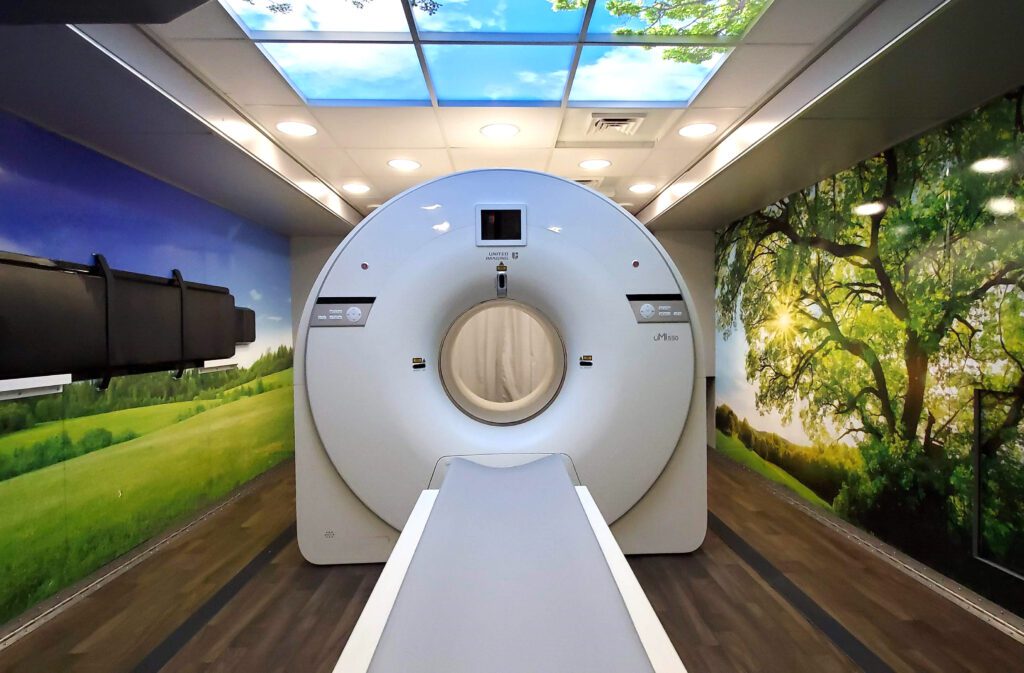What’s New in PET/CT
Effect of PET/CT standardized uptake values on complete response to treatment before definitive chemoradiotherapy in stage III non-small cell lung cancer.
PET/CT Updates, Research & Education
November 2018
Purpose
The standard treatment for patients with stage III non-small cell lung cancer (NSCLC), unsuitable for resection and with good performance, is definitive radiotherapy with cisplatin-based chemotherapy. Our aim is to evaluate the effect of the maximum value of standardized uptake values (SUVmax) of the primary tumor in positron emission tomography-computed tomography (PET/CT) before treatment on complete response (CR) and overall survival.
Methods
The data of 73 stage III NSCLC patients treated with concurrent definitive chemoradiotherapy (CRT) between 2008 and 2017 and had PET/CT staging in the pretreatment period were evaluated. ROC curve analysis was performed to determine the ideal cut-off value of pretreatment SUVmax to predict CR.
Results
Median age was 58 years (range 27-83 years) and 66 patients were male (90.4%). Median follow-up time was 18 months (range 3-98 months); median survival was 23 months. 1-year overall survival (OS) rate and 5-year OS rate were 72 and 19%, respectively. Median progression-free survival (PFS) was 9 months; 1-year PFS rate and 5-year PFS rate were 38 and 19%, respectively. The ideal cut-off value of pretreatment SUVmax that predicted the complete response of CRT was 12 in the ROC analysis [AUC 0.699 (0.550-0.833)/P < 0.01] with a sensitivity of 83%, and specificity of 55%. In patients with SUVmax < 12, CR rate was 60%, while, in patients with SUV ≥ 12, it was only 19% (P = 0.002). Median OS was 26 months in patients with pretreatment SUVmax < 12, and 21 months in patients with SUVmax ≥ 12 (HR = 2.93; 95% CI 17.24-28.75; P = 0.087). CR rate of the whole patient population was 26%, and it was the only factor that showed a significant benefit on survival in both univariate and multivariate analyses.
Conclusions
Pretreatment SUVmax of the primary tumor in PET/CT may predict CR in stage III NSCLC patients who were treated with definitive CRT. Having clinical CR is the only positive predictive factor for prolonged survival.
Source: Clin Transl Oncol. 2018 Sep 18. doi: 10.1007/s12094-018-1949-6.
<https://www.ncbi.nlm.nih.gov/pubmed/30229391> Retrieved 26 October 2018.

November Lung Cancer Awareness Month
- Nearly 38 million Americans smoke cigarettes and smoking remains the single largest preventable cause of death and illness in the world
- 1 year after quitting smoking, the risk of coronary heart disease is half of that of a smoker and your heart attack risk drops dramatically
- Not only smokers get lung cancer. For example, in the U.S., about 31,000 people die each year from nonsmoking-related lung cancer
Connect with Us
Get additional information and stay up-to-date with the latest news by connecting with us on social media.



